Roots under Beale: The Significance of Beale Street to Memphis Hoodoo History
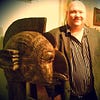 Tony Kail
Tony Kail
In the late 1800s, Robert Church, the first African-American millionaire in the South took great interest in Beale Street. After purchasing land on Beale, Church built Church Park and Auditorium exclusively for black Memphians. He also created a recreational center and an upscale hotel. Beale Street was very important to African American life in Memphis as Church wanted to create a safe haven for black Memphians where African American food, music and entertainment could be celebrated.
A community of healers, conjurers and rootworkers began to develop on Beale. Memphians knew that you could visit the right store or juke joint and find someone with the ‘gift’ to provide magical and spiritual help. Beale Street musicians like W.C. Handy began to speak of the hoodoo culture through the lyrics of their songs. Blues singer Lillie Mae Glover known as ‘Ma Rainey II’ became popular on Beale Street as not only a performer but also a conjurer. She would perform rituals and various spiritual workings for other performers on Beale, as well as random customers who knew to seek her out. One of her special abilities was the ability to make mojo hands for blues musicians. While many hands were traditionally made using roots, lodestone and a red flannel bag, Lillie Mae made hers using common ingredients like sugar, flour and a heap of coal.
It became evident that hoodoo was being practiced in downtown Memphis much to the dislike of the white community. Hoodoo and any African based religious practices were compared to savage paganism that threatened the wives and children of the white community of Memphis. Local police were put on alert regarding the threat of hoodoo and ‘voodooism’ as it was commonly referred to.
The
Memphis Press-Scimitar reported:
‘The Voodoo business still thrives on Beale Street. Police, looking for a witch
doctor yesterday confiscated a half a sack full of “Stay Away Powder,”
“Easy Life Powder” and “Spanish Luck Drops” being sold to negroes at
25 cents a set. The “Stay Away” powder, supposed to jinx a love rival,
proved to be nothing stronger than flour. “Easy Life” powder appeared to
be a fine grade of ground clay. “Spanish Luck Drops” were more potent.
They were a cheap but stout perfume. All in all, police figured the 25-cent
collection cost the producers not more than a couple of cents.’
Headlines from various newspapers warning of African-American practices in Memphis
Raids on rootworkers and conjurers were quite common in the city. There is record of a number of arrests where hoodoo devotees were arrested and artifacts such as mojo bags and amulets were confiscated and in some cases destroyed in the presence of practitioners. Hoodoo was not only feared but represented empowerment for the black community, something that the times simply would not allow.
The development of a hoodoo community on Beale Street gained the notoriety of the title ‘The Black Magic District’ as many Memphians knew that one could obtain a cleansing, a black cat bone or guidance from the ancestors by visiting the right individual on Beale. In the 1940s gold miners would visit Beale Street looking for conjurers to help them spiritually locate treasure along the Mississippi River. The rising number of Memphians using Beale Street’s healers as a form of healthcare caused some Memphis physicians to become critical and voice offense against the community’s rootworkers. However as writer Keith Wailoo in has noted
“Those who invoked spirits to relieve one’s rheumatism or to subdue one’s enemies would not be driven easily from the Bluff city.” Hoodoo was here to stay.
Early footage of A. Schwab
In 1876, Jewish immigrant Abraham Schwab opened one of Memphis’s most iconic businesses on Beale Street. A. Schwab began as a dry goods store offering everything from cloth overalls to blues records. Years later the store began to carry a number of hoodoo related curios. In fact at one point the store was literally bringing in shipments of over one hundred and twenty tons of hoodoo related candles. The hoodoo community in Memphis would purchase oils, candles, incense and roots from the oldest store on Beale. One of my earliest exposures to hoodoo curios came when as a child I was taken into Schwab by my parents. I remember the scent of incense and the colorful collection of candles and curios. It was a wonderland to the senses.
A. Schwab curio counter during the Eighties
During the writing of
A Secret History of Memphis Hoodoo: Rootworkers, Conjurers and Spirituals, I was given the opportunity to visit the store’s archives and see some of the remnants of hoodoo curios and artifacts. A number of old curios from Memphis based companies like ‘LaClyde Lucky Products’ and ‘Lucky Heart Cosmetics’ were preserved in pristine condition saved for their historical preservation. Boxes of dried rattlesnake root, John the Conqueror and assorted herbs could still be found. A member of the Schwab family shared stories of hoodoo practitioners throughout the years and the many testimonies and stories of customers from the conjure community.
Roots discovered in the archives at A. Schwab
These are but a few of the numerous stories about rootworkers and conjurers on Beale Street that were instrumental in the history of hoodoo in Memphis. The history of hoodoo in Memphis is a story of cultural survival that needs to be told


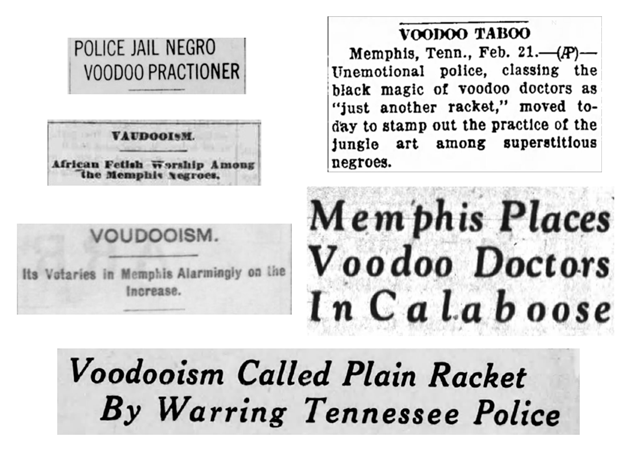
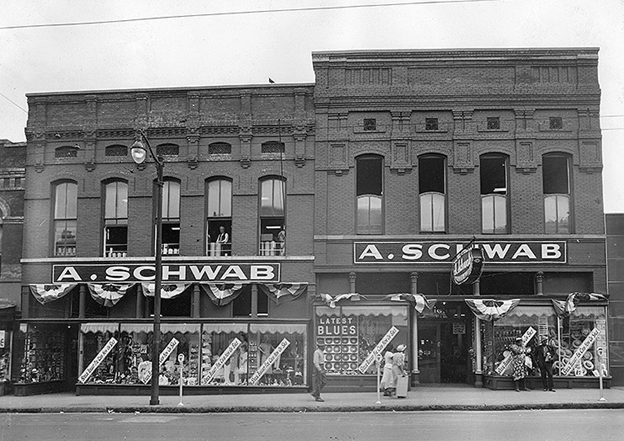
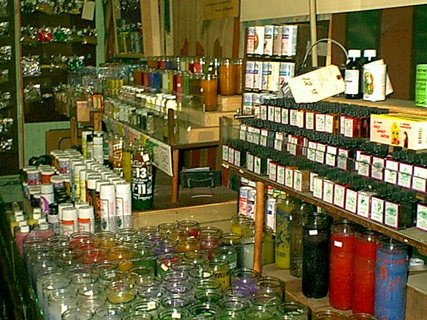
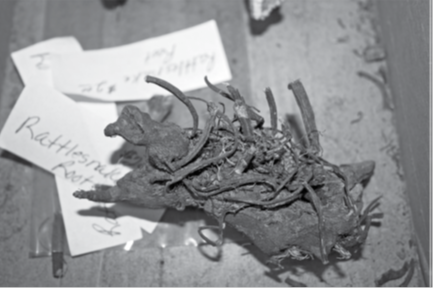

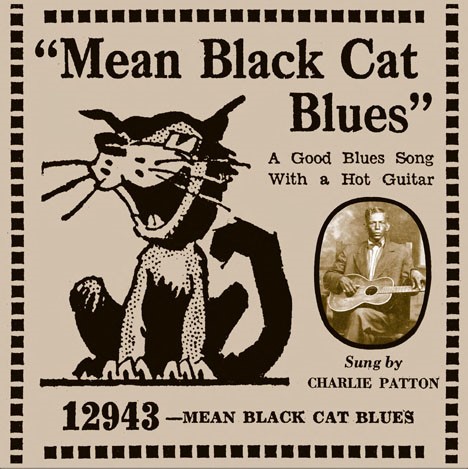

 ......oh shyt.
......oh shyt. 



